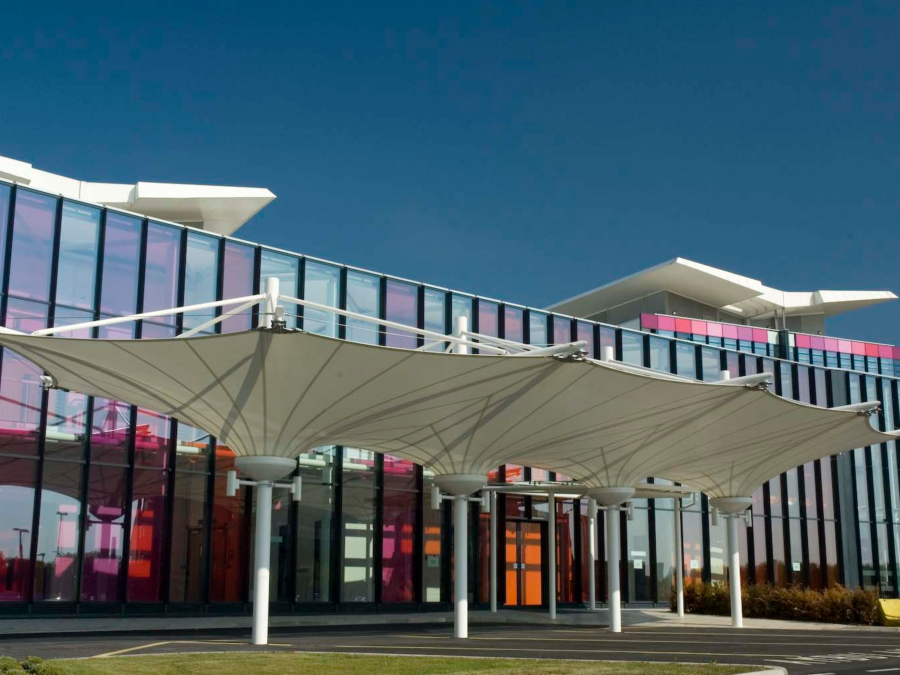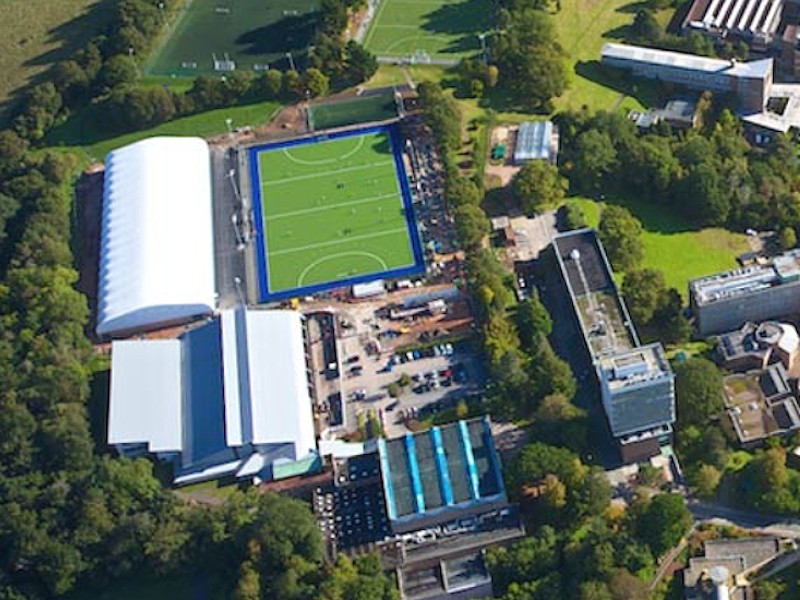
Event Spaces Reimagined: J & J Carter's Expertise
Imagine a music festival bathed in soft, natural light filtering through a billowing white canopy. Or, a sleek, modern exhibition hall where guests can move freely under a soaring, geometric roof. This isn't science fiction; it's the reality of tensile fabric structures, the revolutionary wave transforming event spaces worldwide.
Creating spaces that captivate and function flawlessly under various conditions is a paramount challenge within temporary event planning. J & J Carter is leading the way with tensile fabric structures, a pioneering solution that merges aesthetics with practicality.
This blog post will explore how these structures are not just alternatives to traditional buildings but are revolutionary in shaping the future of events structures.

The Essence of Tensile Fabric
Tensile fabric structures are characterised by flexibility, durability, and striking visual appeal. These architectural marvels are made with high-tech materials like PVC, PTFE glass, and silicone-coated fabrics, these structures can span large areas without internal support, creating open and inviting spaces. Their ability to form unique shapes and curves allows architects and planners to push the boundaries of conventional design.
A Closer Look at Tensile Materials
The architectural discipline of Tensile fabrics relies on various materials that possess unique properties to create lightweight, flexible, and translucent membranes that can span large areas and transform spaces.
- PVC-Coated Polyester: Widely used due to its cost-effectiveness and versatility, PVC-coated polyester is perfect for events that require quick setup and takedown. It is treated to resist UV rays and mildew, making it suitable for outdoor use in various climates.
- PTFE-Coated Glass Fiber: Known for its longevity and robustness, PTFE-coated glass fibre is a premium material choice for permanent installations. Its non-stick surface ensures it remains clean, reducing maintenance costs significantly.
- Silicone-Coated Glass Fiber: This material stands out for its translucency and glossy finish, providing a luminous quality that enhances natural light usage within the structure. It is also fire-resistant and extremely durable, ideal for safety-centric applications.
Advantages of Tensile Structures
- Architectural Freedom: The flexibility of the tensile fabric allows for innovative forms and shapes, providing architects with the freedom to create iconic structures that are both functional and spectacular.
- Speedy Construction: The lightweight nature of fabric structures means they can be erected much faster than traditional buildings, a crucial factor in the fast-paced world of event management.
- Environmental Impact: Tensile structures are notable for their energy efficiency. The fabrics can be designed to enhance natural ventilation and light, significantly cutting down on electric usage for air conditioning and lighting.
- Cost-Effectiveness: Although the initial investment may be high, the durability and ease of maintenance of tensile fabrics ensure a lower total cost of ownership compared to conventional materials.
Versatility and Customisation
Tensile fabric structures offer unparalleled versatility in design and function. J & J Carter's approach allows for customisation to meet specific event requirements:
- Modular Design: These structures can be designed as modular units, allowing for easy expansion or reconfiguration based on event needs.
- Multi-functional Spaces: A single structure can be adapted for various purposes, from exhibition halls to concert venues, maximising the utility of the investment.
- Branding Opportunities: The fabric surface provides an excellent canvas for branding and promotional graphics, enhancing the visual impact of corporate events.
The Practical Advantages for Event Planners
Tensile fabric structures offer several practical benefits for event logistics that make them ideal for event planners:
- Rapid Deployment: These structures can be installed quickly, reducing setup time and labour costs for temporary events.
- Transportability: The lightweight nature of tensile fabrics makes them easy to transport, and ideal for touring events or festivals that move between locations.
- Weather Resilience: Properly designed tensile structures can withstand various weather conditions, providing a reliable shelter for outdoor events
Future Trends and Innovations
Looking ahead, tensile fabric structures are poised to play an even more significant role in event planning and architecture:
- Integration with Digital Technology: Future developments may include smart fabrics that can change opacity or colour or integrate projection mapping for dynamic visual displays.
- Advancements in Material Science: Ongoing research into new fabric technologies may yield materials with even greater durability, translucency, or thermal properties.
- Sustainable Design: As sustainability becomes increasingly important, tensile structures may incorporate recycled materials or be designed for easy disassembly and reuse.
J & J Carter: Pioneering Innovative Solutions
The revolution in event spaces brought about by tensile fabric structures is just beginning. With their blend of beauty, functionality, and environmental sensitivity, these structures are set to redefine how events are experienced. J & J Carter is at the forefront of this innovation, crafting solutions that not only meet the demands of modern events but also inspire the future of architectural design.
Embrace the future of event planning with J & J Carter as your partner in creating extraordinary event experiences. Contact us today to discover how our expertise in tensile fabric structures can transform your next event into a benchmark of innovation and sustainability.


